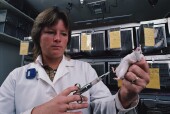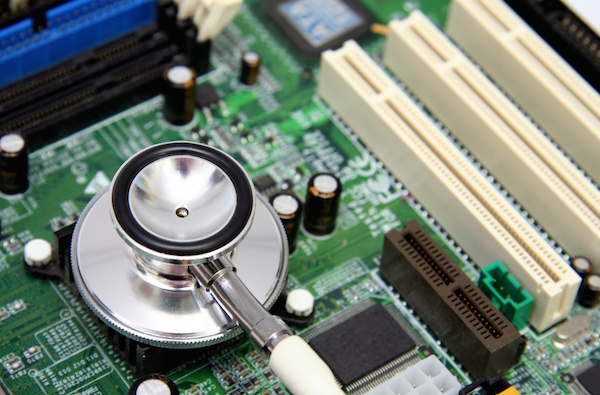
THURSDAY, June 24 (HealthDay News) — Scientists have succeeded in fashioning a new, healthy lung out of the structural remains of an old one in rats.
The researchers, reporting in the June 25 issue of Science, hope one day to replicate the feat in humans, giving hope to the millions of people with cystic fibrosis, emphysema, chronic obstructive pulmonary disease (COPD) and perhaps even lung cancer.
But that could take as long as 20 or 25 years to accomplish, warned study author Thomas Petersen, a postdoctoral associate at Yale University.
“What we’re talking about is still science fiction, although we’re a lot closer now,” added Dr. Neil Schachter, a professor of pulmonary medicine at Mount Sinai Medical Center in New York City.
Petersen and his colleagues started with a normal rat lung, then treated it chemically to remove all the cells, a process known as decellularization. This left them with just the lung scaffolding, including the all-important airways and blood network.
“We retained the overall structure of the lung but it was completely free of all cells, as well as components that would be detected by the body as foreign, meaning that the scaffold would not be rejected were you to do a transplant,” Petersen explained.
This was the most challenging part of the experiment. “The 3-D structure of a lung is quite complex and it’s not something that you can easily make,” Petersen explained.
The team then seeded the scaffold with blood vessel cells and airway cells, and then grew the lungs in a bioreactor for about a week. During the culture period, the lungs were made to “breathe” mechanically.
With the newly engineered lung tissue, the group was able to perform four transplants of a left lung back into rats.
“The transplants were maintained for up to two hours and they were functioning in terms of pulling in oxygen and getting rid of carbon dioxide,” he said. “The lungs were exchanging oxygen.”
Researchers now need to do more experiments in rats, refining the rebuilt lung and extending the duration of the transplant.
“The lungs we have now perform quite well, but they’re not perfect,” Petersen said.
The process would be much the same in humans, starting with replicating the scaffolding, then repopulating it with new cells.
“The more challenging thing will be to identify the right cells and this will probably involve using stem cells derived from a particular patient,” Petersen said.
A separate group of researchers also reporting in Science were able to create an artificial “lung on a chip,” basically a miniature model of a working human lung made from cultured human cells from lung and blood vessels.
The manufactured “lung” is about the size of a coin or a pencil eraser.
“We basically used microfabrication techniques that were developed for the computer microchip industry,” explained study senior author Dr. Don Ingber, founding director of the Wyss Institute for Biologically Inspired Engineering at Harvard University. These were combined with tissue engineering processes.
“They have constituted in a system which is quite elaborate,” Schachter said, adding that one aspect of the model seemed particularly useful: the ability to study the interactions of inhaled toxins much more easily than could be done in existing systems.
Ingber and his group are hoping the lung on a chip can replace animal models as the basis for pharmaceutical research. Animal models, Ingber pointed out, are incredibly costly and take a long time to complete.
On top of that, he said, “animals often don’t predict what happens in humans. Our motivation was ‘Can we shortcut all that.'”
The group is also working towards developing a “human on a chip,” which Ingber said is essentially “making multiple organ-on-chips [e.g., lung, heart, gut, liver, kidney, bone marrow] and linking them together by engineered vascular networks.”
More information
The U.S. National Heart, Lung, and Blood Institute has more on how the lungs work.

